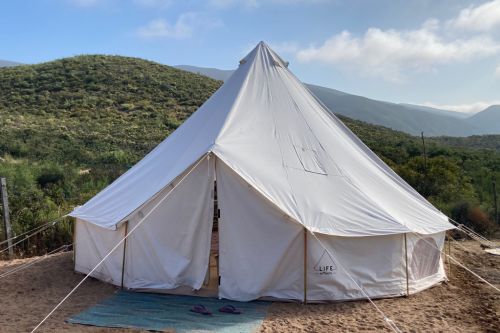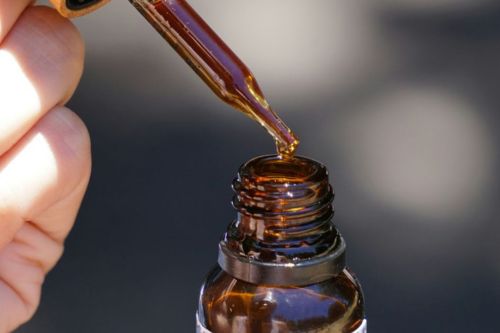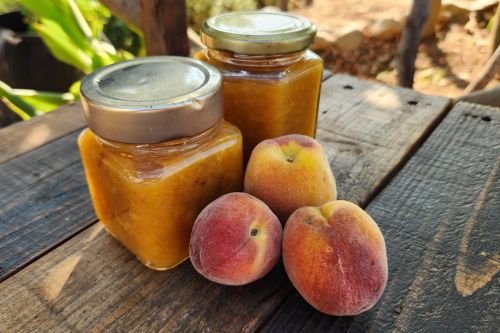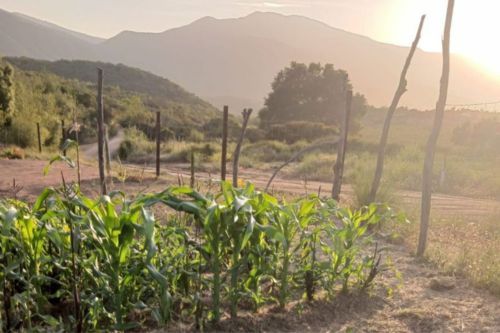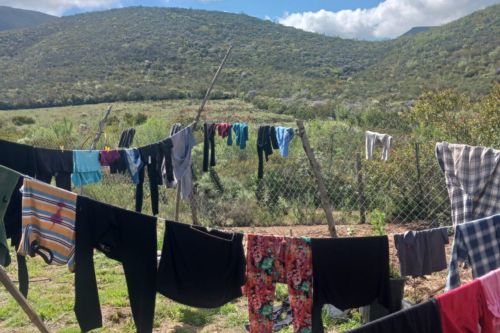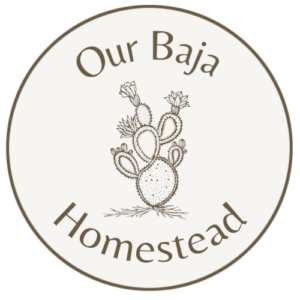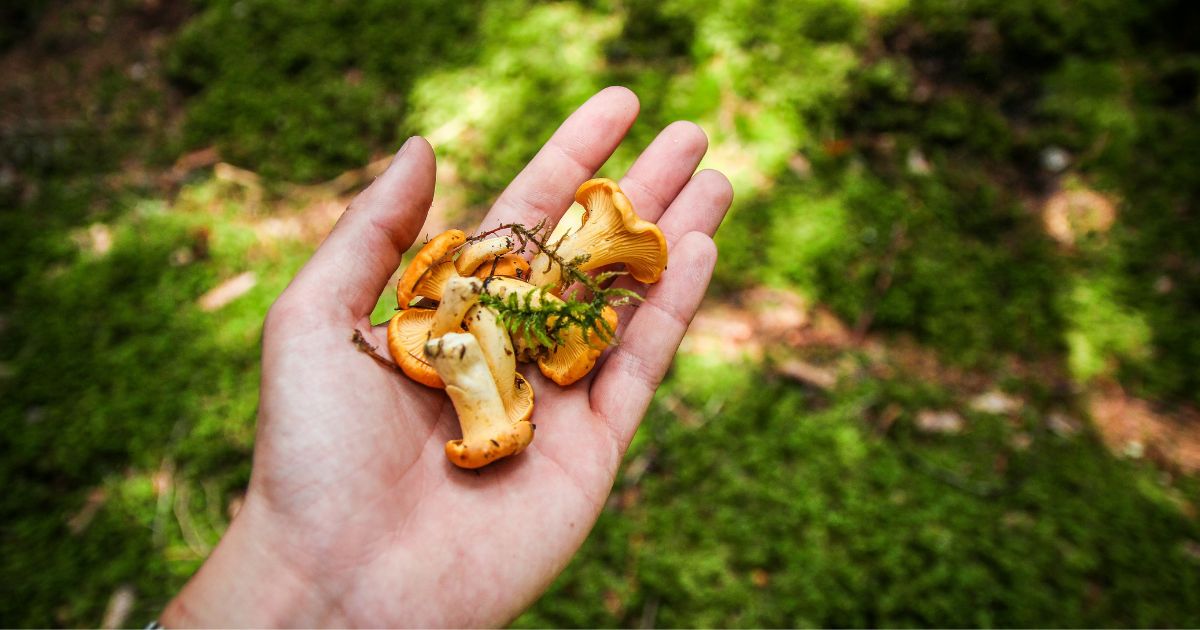I don’t know about you, but when I hear the word forage I picture an old bearded man frolicking through the hills of Ireland with a basket of hand-picked mushrooms. While this image may present a rather peculiar stereotype, it isn’t that far off from what foraging is (minus the frolicking)!
Growing up in the mountains of Santa Cruz, California, I was surrounded by beautiful and bountiful wild foods and medicine. I remember my first harvest of elderberry from a massive elderberry tree in the local laundromat parking lot. I gazed up at the tangled magical tree and thousands of tiny amethyst colored elderberries gazed back at me. It was a moment of pure enchantment that I’ll never forget.
Now that our family lives in Baja California, a state defined by its dry chaparral ecosystem, I have access to very different, yet still bountiful, wild foods and medicine. Yerba Santa, Nopales, Acorns, and Toyon Berries – oh my! Since the beginning of our homestead journey here, I have applied the foraging skills I learned in my youth to the world of foraging down here in Baja California, Mexico.
All this talk about foraging and I still haven’t dived into what this practice exactly is! Let’s get into it!
What the Heck is Foraging?
Foraging, in a nutshell, is the act of searching for wild food or provisions. It can be the act of going from place to place searching for edible foods or for things you can use.
Some people only think of collecting edible plants, (such as berries, mushrooms, nuts, herbs and greens) when they hear the word forage. In reality, foraging consists of hunting for prey (animals), as well as gathering edible plants.
For this article we will use the word forage as a means of gathering wild foods and medicinal herbs that grow from the earth without human intervention and cultivation. To break it down even more – foraging = gathering, scavenging, hunting, fishing, and collecting.
Okay, got all that? Now, let’s break down the concept of Foraging even more and compare it to Wildcrafting.
Foraging Vs. Wildcrafting
Foraging and Wildcrafting are often used interchangeably, although some foraging enthusiasts/wildcrafters believe that the practices have a slight difference. Foraging is used mainly to describe gathering wild foods, while wildcrafting describes the act of gathering herbs and fungi to make medicine.
Nonetheless, Forage and Wildcraft are essentially different words for the same practice. In my opinion, the word Wildcraft just sound significantly cooler than the word Forage! Plus, its a very descriptive word – foraging certainly is a craft of collecting wild foods!
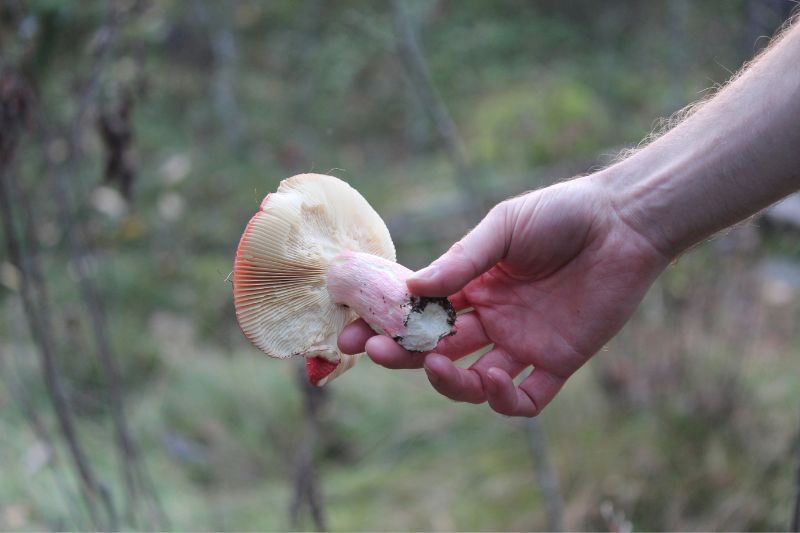
The Roots of Foraging
As you can imagine, the practice of foraging (or hunter-gatherer culture), is almost as old as humans themselves! Homo Sapiens (us humans) and our distant relatives have been foraging and hunting for around two million years.
In fact, the only way humans got their food was from foraging up until agriculture was developed 10,000-12,000 years ago. That’s wayyy more years of foraging compared to farming.
Living a hunter-gatherer lifestyle required people to live nomadically, meaning they would travel around to search for their food (and avoid bad weather/life threatening predators). Even when the farming lifestyle became more common than that of the hunter-gatherer lifestyle, foraging was still practiced to supplement diets. Today, only a small handful of hunter-gatherer tribes remain on our planet.
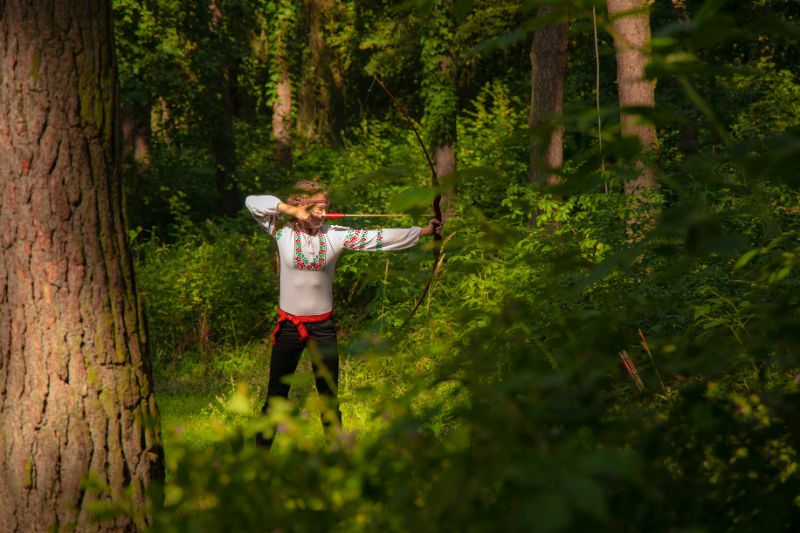
The Resurgence of Foraging
Although foraging was greatly reduced after farming was introduced, the practice never fully disappeared. With the rise of social media accounts dedicated to foraging, plus the free time (for some) gained from the Covid lockdowns, foraging has become a popular practice again.
The off grid homesteading niche on social media platforms (and blogs, like mine) have also contributed to the rise and interest of foraging. Because homestead life often involves raising livestock/having a garden for self-sustainability, foraging is an excellent sustenance practice to add to most homesteader’s lifestyles.
The idea of searching for something free that the earth has provided, rather than going out to the store to buy it, is the typical off-grid homesteaders dream.
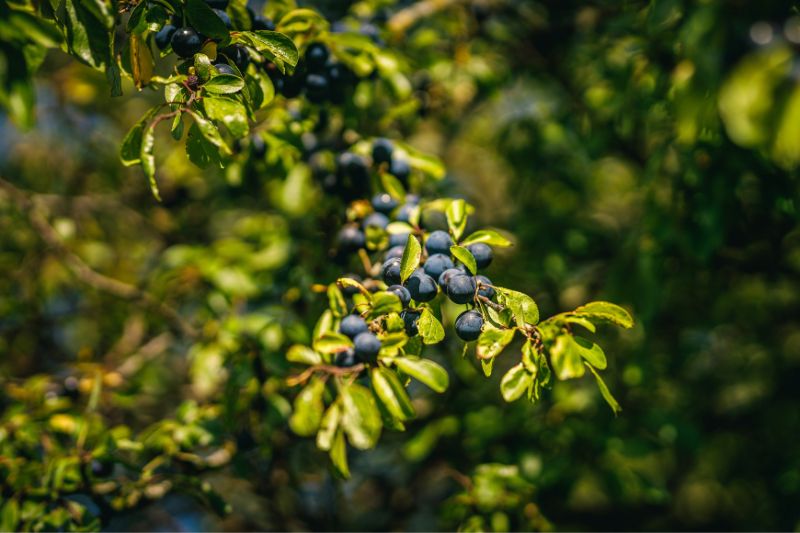
Foraging for Wild Foods and Herbs
But, like, how do I actually forage for wild foods?! That’s the million dollar question! You’re going to want to consider these foraging suggestions and ideas to ensure success in your foraging practice.
- Research as much as possible before heading out into nature. This can be done at home with online courses, you tube videos and blog posts. In person classes are an excellent way to learn about local plants and their uses. Additionally, in person classes offer a way to meet new foraging buddies, and you get to support local businesses!
- Download a plant/mushroom identifying app to be extra cautious when identifying possibly toxic wild food. Using technology isn’t for every forager, but an app can be helpful when just learning plant names and uses.
- Bring a book and a friend with you! Both of these things can provide extra safety measures – a book to help you look up information, and a friend to share knowledge and fun!
- Bring the right tools. The number one item to bring on your forage outing is a solid basket to carry the collected wild foods. You will also want to bring a small knife or clippers to cut tougher wild food roots and such. Lastly, some foragers like to bring binoculars to scope out wild foods and herbs in far away places. Note: make sure you include in your research the best way to collect wild foods without damaging the whole plant.
- Check the weather. Most of the time you do not want to go out in snow or rain (unless you are a hardcore type of forager)!
- Check the availability of the land you will be going to. Do you have permission to be there? Is there anything posted about not collecting wild foods there? Are you on native land that is reserved for Native Americans to use? Foraging involves a solid amount of thoughtfulness, so make sure you prepare well before you forage.
- Study the Seasons. “Bro, I already learned the seasons in Kindergarten.” Not like that, Bro! Study the seasons of a plant’s life cycle and when they are ready to collect. For instance, the fruit of the blue elderberries are ready to collect in Late Summer and Early Fall here in Baja California (and perhaps in parts of the U.S. as well). Many foragers know to collect the berries earlier rather than later, before the birds eat all of the berries! Additionally, elderflowers (which are packed with medicinal benefits), are ready to harvest in Spring.
Note: PlantNet has an awesome app to help you identify unknown plants and herbs.
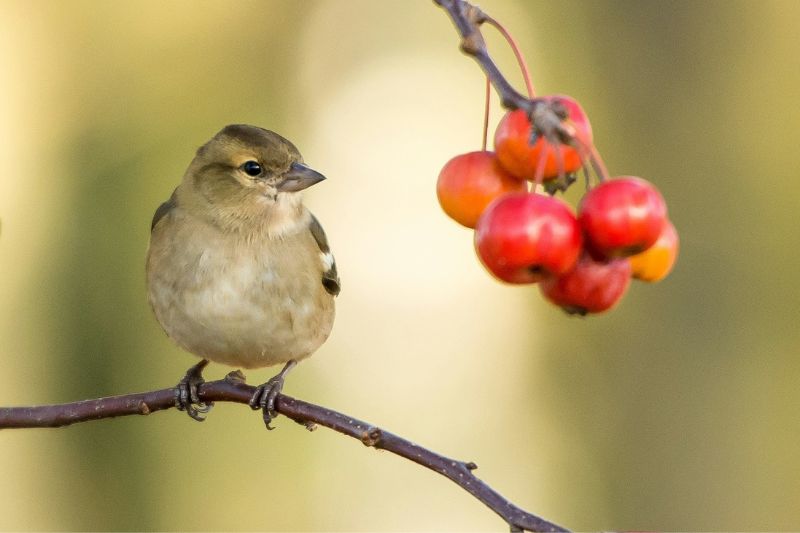
Best Places to Forage
Foraging can happen mostly anywhere! Start in your own backyard by looking for wild foods and herbs. This is where the aforementioned plant identifying app comes in handy – if you have questions about a plant and its uses just snap a photo and find out all of its information.
If you live in an urban area with a small outdoor space, start foraging by looking for classic invasive herbs in local parks, parking lots, and even cracks in the sidewalk! Dandelion, White Clover, Plantain, and Stinging Nettle are some medicinal herbs that are omnipresent in North America.
When foraging for wild food and herbs, make sure you limit your foraging from heavily sprayed areas (that use agricultural pesticides) and polluted side-of-the-road spots. This will ensure the safety of your foraged finds – remember, our bodies are temples and we must consume the healthiest food and medicines possible.
Another wonderful place to find foraged delights is in open nature reserves. These are areas that are protected by the government with the intention of conserving the local flora, fauna and wildlife. Just make sure you research whether collecting wild foods and herbs is allowed in the specific open reserve you intend to forage at.
If urban foraging is not your thing, and/or you don’t have access to open spaces, you can always ask ranchers and farmers to forage on their properties. If you are foraging for invasive species, they will be especially welcoming to have you come and forage on their property.

Ethical Foraging
I couldn’t end this article without writing about the importance of foraging ethically. Especially with the history and ongoing extraction/abuse of the Earth’s natural resources at the hands of destructive individuals, governments and corporations.
Foraging is a reciprocal practice. When we take products of the earth we must remember to give back to the earth. This can look like:
- making an offering of water to the plant
- praying over the health of the plant
- cutting the plant in an ethical way so that it can continue to grow
- leaving flowers, berries and herbs on the plant so that you can share with other animals and humans
- spreading out your harvest by collecting from different patches around the area
- only harvesting what you really need
- keeping the area you are foraging in the way that you found it
Lastly, we must remember to give credit where credit is due. All of our foraging knowledge (of the specific area we reside on) comes from the indigenous people of that region. We must give gratitude to them for passing on the plant wisdom generation to generation.
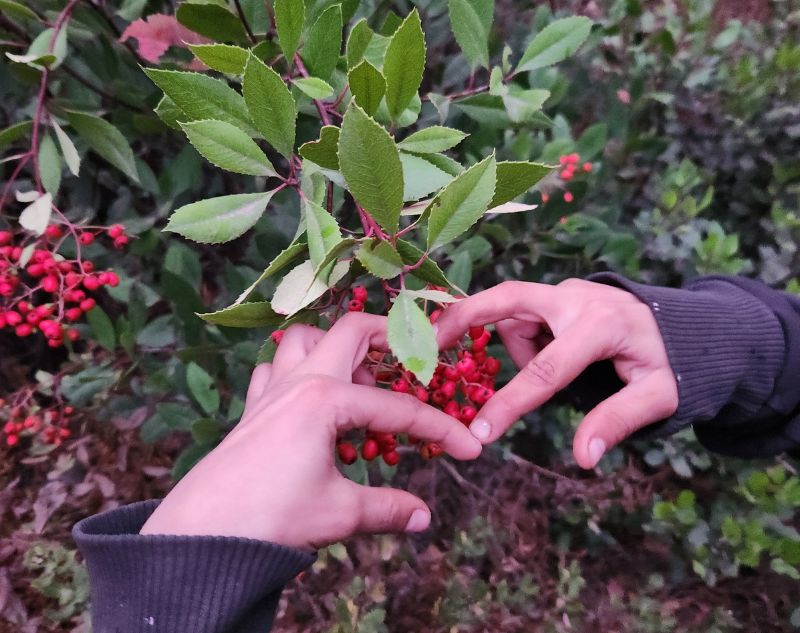
It is also imperative to understand that for many indigenous people foraging was a practice that was stripped away from them. This was because of racist restrictive laws placed on native folks, horrible relocation practices and overall oppression against Native Americans at the hands of white settlers.
Having this historical knowledge helps our foraging practice to be ethical. Having a conscientious practice is beneficial for ourselves, our Indigenous neighbors, the plants, the animals, and the earth herself.
Foraging can be as simple or detail oriented as you want – just make sure you are being safe, ethical and thoughtful!
